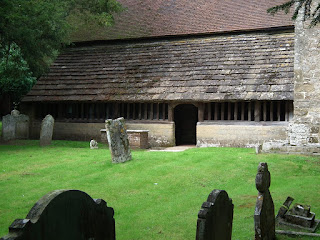
 Churches were busy places in medieval times. As the largest roofed space in the village, they would be used for many assemblies such as councils, court hearings, schools and even shops as well as for worship.
Churches were busy places in medieval times. As the largest roofed space in the village, they would be used for many assemblies such as councils, court hearings, schools and even shops as well as for worship.The church was the venue for tax assessment hearings. Wealthier parishioners known as burgesses would be ‘at scot and lot’, liable to pay tax (scot) but also qualifying for trading and other privileges (lot). If anyone managed to persuade the court that they owed no tax but were still eligible for the benefits, they got off ‘scot-free’.
Tithes were also set by courts sitting in the church. Tithes were not payable by everyone, and farmers would often hotly dispute their liability to pay. The church was even used to store beer made from tithed barley, which must have enlivened many a boring meeting.
 In the early medieval period, few could read and virtually the only people who could write were priests. As the country got wealthier, however, parish priests began to make a bit of money on the side by teaching. And, of course, lessons were held in the church.
In the early medieval period, few could read and virtually the only people who could write were priests. As the country got wealthier, however, parish priests began to make a bit of money on the side by teaching. And, of course, lessons were held in the church.Gradually, all these essentially secular uses began to be regarded as inappropriate for the House of God and special buildings were erected for courts, schools and markets.
At Lurgashall, at some time in the 15th century the rector became concerned about people who had travelled a considerable distance to Sunday services were staying in the church for the day, eating, drinking and chatting. His solution was to build a lean-to cloister along the south wall of the nave for them to stay in the warm between morning and evening services.
From 1622, when the priest was granted a licence to teach, it was also used as a schoolroom.
The cloister is a lovely structure, roofed in huge stone slabs above a line of oak mullions forming a horizontal band of windows that might have been designed by a modernist architect today.
